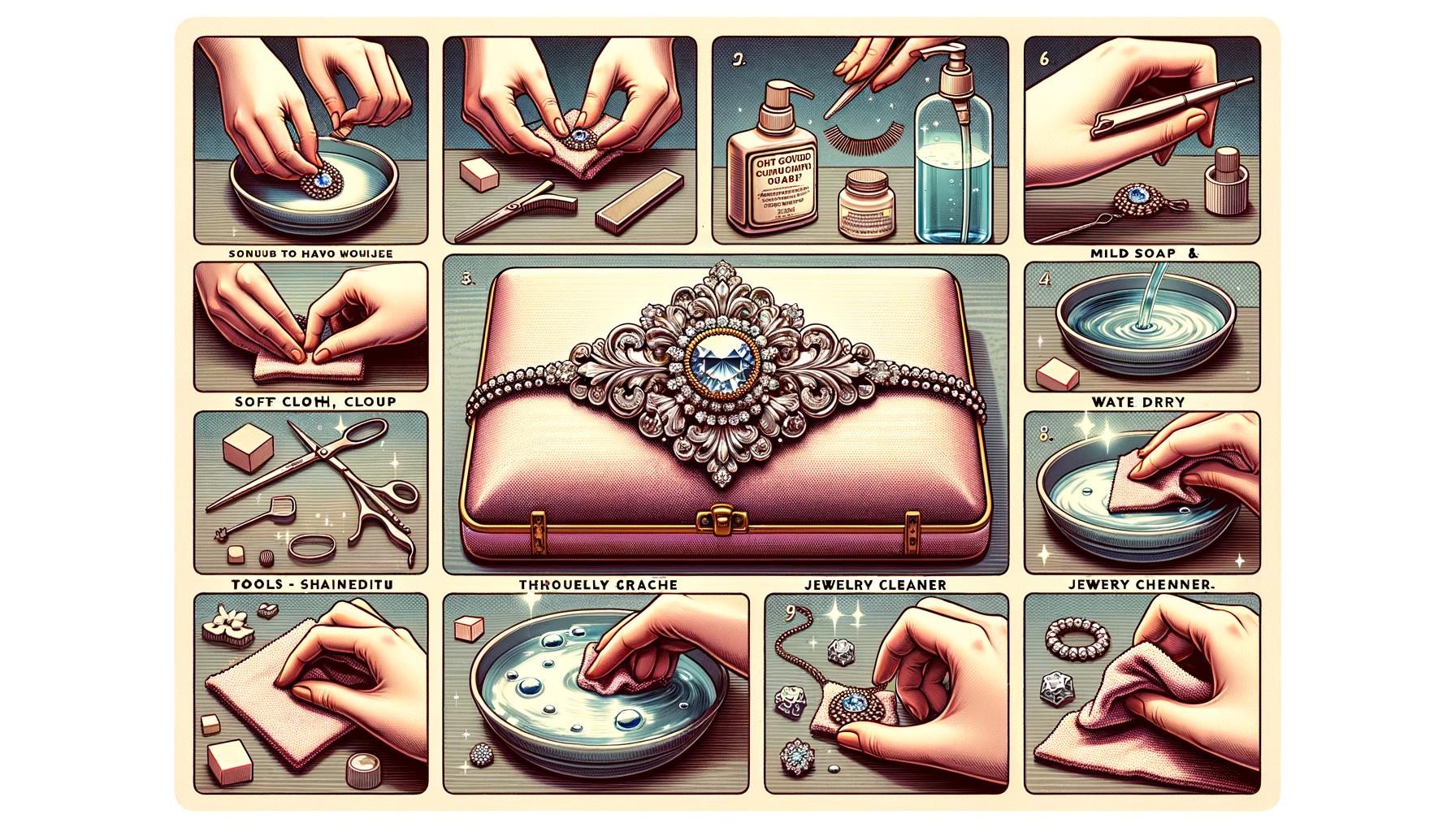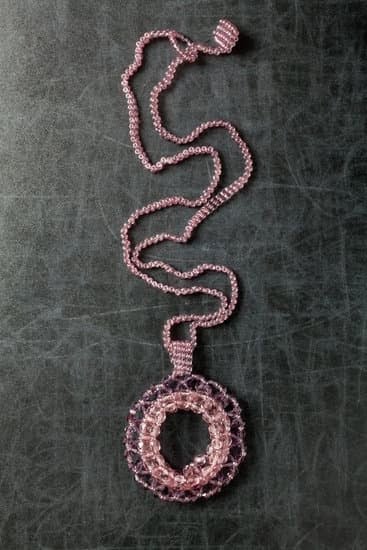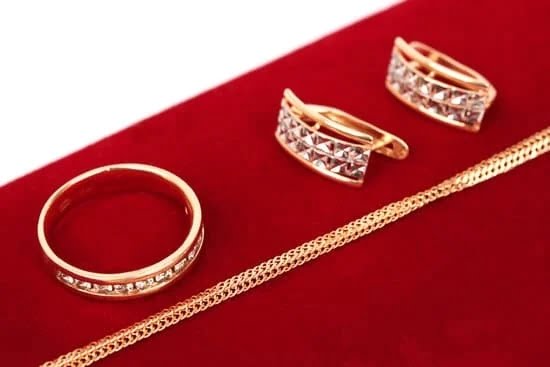When it comes to exquisite jewelry, rhodium-plated pieces are renowned for their reflective brilliance and exceptional durability. However, understanding how to preserve the luster of rhodium-plated jewelry is crucial in ensuring that these cherished items maintain their captivating shine over time.
Rhodium plating, a technique used extensively in the jewelry industry, involves coating a base metal-often white gold or silver-with a thin layer of rhodium, an incredibly rare and precious metal. This not only enhances the appearance of the jewelry but also provides added protection against scratches and tarnish.
Maintaining the luster of rhodium-plated jewelry is imperative for both aesthetic and longevity reasons. Without proper care, these pieces can lose their dazzling sheen due to everyday wear and exposure to various elements. Factors such as environmental pollutants, chemicals found in personal care products, and even regular handling can gradually diminish their reflective quality. Therefore, investing time in learning effective preservation techniques is essential for anyone looking to keep their rhodium-plated treasures shining brightly.
This comprehensive guide will walk you through practical tips and advice on how to preserve your rhodium-plated jewelry’s luster effectively. From understanding the properties of rhodium plating to discovering daily maintenance habits and cleaning methods, this blog has got you covered. Whether you’re a long-time collector or new to owning these elegant items, our insights will help ensure that your beloved pieces continue to sparkle like new for years to come.
Understanding Rhodium-Plated Jewelry
Rhodium plating is a technique used to enhance the appearance and durability of various types of jewelry. By applying a thin layer of rhodium over another metal, usually white gold or silver, jewelers can offer pieces that exhibit a brilliant, reflective shine.
This process not only enhances the visual appeal but also adds an extra layer of protection against scratches and tarnishing. One primary reason rhodium is chosen for plating is its exceptional hardness and resistance to corrosion, making it ideal for protecting precious pieces.
This rare metal offers numerous advantages when used in jewelry plating. First and foremost, rhodium’s high reflectivity makes it perfect for creating stunningly bright finishes that catch the eye. Additionally, its hypoallergenic properties make rhodium-plated pieces suitable for individuals with sensitive skin. Common uses in the jewelry industry include engagement rings, earrings, necklaces, and bracelets – essentially any item where maintaining a sleek, polished look is paramount.
However, to truly enjoy the benefits provided by this sophisticated metal, it’s essential to understand how to preserve the luster of rhodium-plated jewelry. Regular use introduces exposure to various elements and substances that can slowly wear down or dull the rhodium layer.
Knowing simple maintenance practices will help keep your jewelry looking as radiant as the day you bought it. These practices incorporate gentle cleaning routines and careful storage solutions that collectively extend the life and beauty of your cherished items.
Why Luster Fades Over Time
Rhodium-plated jewelry is highly sought after for its dazzling, mirror-like finish. However, this pristine luster can diminish over time due to a variety of factors. One primary cause of luster loss is everyday wear and tear.
As you go about your daily activities, the friction created by clothing, skin contact, and interactions with other surfaces can gradually wear away the thin rhodium layer. This erosion exposes the underlying metal, usually gold or silver, which may not be as reflective as the rhodium coating.
Another significant factor that contributes to the fading of luster is exposure to chemicals. Everyday substances such as lotions, perfumes, and hairsprays contain chemicals that can react with rhodium plating. Over time, these chemicals cause discoloration or dullness in the jewelry’s surface. Household cleaners are also notorious for their abrasive properties and should never come into contact with rhodium-plated items. Knowing how to preserve the luster of rhodium-plated jewelry involves being cautious about chemical exposure.
Comparing rhodium plating to other types of metal plating reveals some interesting insights into its durability. While rhodium is more durable than gold or silver plating due to its hardness and resistance to tarnish, it is still susceptible to wear under certain conditions.
In contrast, metals such as palladium offer similar benefits but are less commonly used due to cost constraints. Maintaining regular care routines and understanding the common threats can dramatically affect how long your jewelry retains its brilliant shine.
- Wear and tear from everyday use
- Exposure to lotions, perfumes, hairsprays
- Contact with household cleaners
Daily Care Tips
Daily care is essential for maintaining the shine and elegance of rhodium-plated jewelry. By incorporating a few simple habits into your routine, you can significantly extend the luster and life of your precious pieces. One crucial daily habit is to gently wipe your jewelry with a soft cloth after each use. This helps remove oils, dirt, and other residues that could dull the shine over time.
Another important tip is to avoid wearing rhodium-plated jewelry during activities that might cause scratching or wear and tear. For instance, it’s wise to remove these items before engaging in sports, doing household chores, or even when using lotions and perfumes which can contain chemicals harmful to the rhodium plating. Limiting physical contact with abrasive surfaces will go a long way in preserving their captivating luster.
Furthermore, consider investing in proper storage solutions to further protect your jewelry from damage when not in use. Using fabric-lined boxes or separate compartments ensures minimal friction between pieces-this is especially useful advice on how to preserve the luster of rhodium-plated jewelry effectively.
| Tip | Explanation |
|---|---|
| Wipe with Soft Cloth | Helps remove oils and residues. |
| Avoid During Activities | Prevents scratches and wear. |
| Proper Storage | Minimizes friction between pieces. |
Cleaning Your Rhodium-Plated Jewelry
Keeping your rhodium-plated jewelry clean is crucial for preserving its radiant luster and ensuring it remains a cherished piece in your collection. Understanding the correct methods for cleaning can prevent damage to the delicate rhodium layer and extend the life of the finish.
Step-by-Step Cleaning Instructions
To begin with, you’ll need a few basic supplies: mild soap (such as dish soap), lukewarm water, a soft cloth, and perhaps a very soft toothbrush for intricate designs. Mix a small amount of mild soap with lukewarm water in a bowl. Immerse your rhodium-plated jewelry in the soapy water for a few minutes to help loosen any dirt or oils that may have accumulated.
Use the soft cloth to gently wipe away grime, taking care not to apply too much pressure. For pieces with detailed work, use the soft toothbrush to reach into crevices but be extra gentle to avoid scratching the surface.
Rinse your jewelry thoroughly under lukewarm running water to remove all soap residues. Pat dry with another soft cloth and lay flat on a towel to air dry completely before storing it away. Remember, keeping your jewelry dry after cleaning is essential as residual moisture can cause tarnishing over time.
Recommended Cleaning Agents and Tools
When selecting cleaning agents, stick to those that are explicitly marked safe for plated jewelry or contain no harsh chemicals. Mild soaps free from detergents and fragrances are usually safe bets. If you’re ever unsure about which products are safe to use, consult with your jeweler for recommendations tailored specifically to how to preserve the luster of rhodium-plated jewelry.
The tools you use are equally critical; microfiber or jewelers’ polishing cloths are ideal due to their non-abrasive nature. Avoid using anything with bristles harder than those on a baby’s toothbrush as they might wear down the plating prematurely. Remember that less is more when it comes to handling these delicate items; only light pressure should be applied during cleaning.
Warnings About What to Avoid
Abrasive cleaners and ultrasonic cleaners should never be used on rhodium-plated jewelry as they can strip away or damage the thin plating layer entirely. Chemicals found in household cleaners, including bleach and ammonia-based products, can also have detrimental effects on rhodium coating. Steam cleaning is another method best avoided since high temperatures can weaken the durability of the plating.
By adhering strictly to these guidelines and avoiding harmful practices, you will significantly contribute toward maintaining that brilliant mirror-like shine characteristic of beautifully kept rhodium-plated pieces.
Proper Storage Solutions
Storing your rhodium-plated jewelry correctly is an essential step in learning how to preserve the luster of rhodium-plated jewelry. Improper storage can lead to scratches, tarnishing, and a decrease in overall aesthetic appeal. Let’s explore some effective storage solutions that can help keep your treasured pieces looking brilliant for longer.
Fabric-Lined Jewelry Boxes
One of the best ways to store rhodium-plated jewelry is by using fabric-lined jewelry boxes. These boxes provide a soft, cushioning environment that protects each piece from abrasive surfaces and potential damage. Fabric lining minimizes friction and prevents scratches that could dull the rhodium plating over time.
Separate Compartments
To further safeguard your jewelry, consider investing in a box or organizer with separate compartments. Each piece should have its own space to prevent them from rubbing against one another. Necklaces, bracelets, rings, and earrings can easily become entangled or scratched when stored together; therefore, separation is key in preserving their integrity.
Keep It Dry and Cool
Moisture and sunlight are two major factors that can deteriorate the quality of rhodium plating. Always store your jewelry in a dry area away from direct sunlight. Excessive humidity can lead to tarnishing, while prolonged exposure to light can fade the shine of the rhodium layer. A climate-controlled environment provides the optimal conditions for maintaining their pristine look.
By adhering to these proper storage solutions, you take crucial steps toward understanding how to preserve the luster of rhodium-plated jewelry effectively. Making these small changes ensures that each cherished item remains as radiant as it was on the day you acquired it.
Periodic Maintenance
Just like any other cherished possession, rhodium-plated jewelry requires periodic inspections and touch-ups to keep it in prime condition. Over time, even the most well-maintained pieces may show signs of wear, such as small scratches or a slight dulling of the surface.
Regularly examining your jewelry under good lighting can help you identify these issues early on. If minor blemishes are found, you can often address them at home by gently polishing the affected area with a soft microfiber cloth designed for delicate surfaces.
For more significant maintenance needs, professional assistance is highly recommended. Knowing how to preserve the luster of rhodium-plated jewelry includes recognizing when it’s time for re-plating. Rhodium plating does not penetrate deeply into the base metal but rather sits atop it as a thin layer.
Therefore, once it starts wearing off, having it re-plated by a professional jeweler is essential to restore its original brilliance and protection. The frequency of re-plating varies depending on how frequently the jewelry is worn and its exposure to potential damage; typical intervals range from 12-18 months.
Considering the cost of professional maintenance is also important for budgeting purposes. Depending on factors such as the thickness of the rhodium layer required and labor costs in your area, re-plating services can vary significantly in price. Investing in these services not only revitalizes your piece but ensures its longevity and continued beauty. Regular maintenance ultimately pays off by preserving both the aesthetic value and sentimental worth of your rhodium-plated jewelry for years to come.
Avoiding Contact With Harmful Chemicals
To keep your rhodium-plated jewelry looking pristine, it’s crucial to avoid exposing it to harmful chemicals. Everyday substances such as lotions, perfumes, and household cleaners can be detrimental to the luster of rhodium plating. These products often contain ingredients that can cause degradation or discoloration of the plating over time. Before applying any skincare or cosmetic products, remove your rhodium-plated items to ensure they remain unaffected.
When performing household chores, be mindful of what tasks might expose your jewelry to harsh conditions. Direct contact with cleaning agents such as bleach, ammonia-based cleaners, and dishwasher detergents should be avoided at all costs. These compounds can strip away the thin layer of rhodium coating, leaving your jewelry dull and lacking its original shine. Always wear protective gloves if you’re handling chemicals, or better yet, store your jewelry safely away during such activities.
It is also beneficial to establish a habit of removing your rhodium-plated pieces when swimming in pools or hot tubs. The chlorine present in pool water is another harmful agent that can negatively impact the plating on your jewelry. Similarly, saltwater from the ocean can also corrode and tarnish the surface. Keeping these tips in mind will help you learn how to preserve the luster of rhodium-plated jewelry effectively.
| Harmful Substance | Reason for Avoidance |
|---|---|
| Lotion | Can cause degradation or discoloration. |
| Perfume | Contains ingredients that damage plating. |
| Household Cleaners | Chemicals like bleach and ammonia strip away rhodium coating. |
| Chlorine (Pool Water) | Harsh chemical that weakens and dulls plating. |
Traveling With Rhodium-Plated Jewelry
When packing your jewelry, it’s crucial to avoid placing it in checked luggage where it can be jostled around or potentially lost. Instead, carry your rhodium-plated items in your hand luggage or personal bag to keep them within reach and under better protection during travel. This not only minimizes physical wear and tear but also reduces the risk of exposure to extreme conditions like temperature changes and humidity, which can tarnish metals over time.
In addition to the precautions taken when packing, be mindful of potential damage once you’ve reached your destination. Avoid exposing your rhodium-plated jewelry to harsh environmental elements such as chlorine in pools, saltwater at beaches, and even excessive direct sunlight.
If you’re participating in activities that might put undue stress on your jewelry-like swimming or hiking-consider leaving these precious items safely stored away unless absolutely necessary. By adopting these thoughtful practices on how to preserve the luster of rhodium-plated jewelry during travel, you’ll ensure that each piece remains as radiant when you return home as it was when you set out on your journey.
Conclusion
In conclusion, preserving the luster of rhodium-plated jewelry is not just about keeping your pieces looking beautiful; it’s also about ensuring their longevity and value. By understanding the unique properties of rhodium plating and why it is chosen for jewelry, you can appreciate the steps necessary to maintain its pristine appearance. Factors like wear and tear and exposure to chemicals can significantly diminish the shine over time, making it essential to follow proper maintenance routines.
Daily care habits, such as gently wiping your jewelry with a soft cloth after each use, go a long way in preventing scratches and maintaining the reflective beauty of rhodium plating. Additionally, cleaning your rhodium-plated pieces with mild soap and avoiding abrasive substances ensures that you do not strip away this delicate layer. Proper storage solutions like fabric-lined jewelry boxes or separate compartments help prevent unnecessary damage when your jewelry is not in use.
Periodic inspections and professional re-plating are crucial for extending the life of these exquisite items. Avoiding contact with harmful chemicals and following safe travel practices can further protect your rhodium-plated jewelry from potential harm. By implementing these tips on how to preserve the luster of rhodium-plated jewelry, you can ensure that your treasured pieces remain as stunning as the day you first acquired them, allowing you to enjoy their beauty for years to come.
Frequently Asked Questions
How to Make Rhodium Plating Shine?
To make rhodium plating shine, it’s essential to clean the piece regularly using a mild soap and warm water solution. Gently scrub with a soft, lint-free cloth or a microfiber towel to remove any dirt or oils that have accumulated on the surface.
Afterward, rinse thoroughly under warm running water and pat dry with a clean, soft cloth. Avoid abrasive cleaning materials as they can scratch the delicate rhodium layer, making it lose its luster over time.
How Do You Keep Rhodium From Tarnishing?
Keeping rhodium from tarnishing primarily involves avoiding exposure to harsh chemicals and environments that can cause deterioration. Always remove rhodium-plated jewelry before swimming in chlorinated pools, using household cleaners, or applying beauty products like lotions and perfumes.
Store your jewelry in a cool, dry place away from direct sunlight when not in use. A soft fabric pouch or a lined jewelry box can provide additional protection from environmental factors that could lead to tarnishing.
How to Take Care of Rhodium Plated Jewelry?
Taking care of rhodium-plated jewelry means adopting gentle handling and maintenance practices to preserve its look and quality. Regularly clean the pieces with mild soap and water to maintain their pristine finish, gently wiping them dry afterward.
Avoid exposing the jewelry to harsh chemicals, such as those found in cleaning agents or personal care products, which can wear down the plating faster. When not worn, store the items separately from other jewelry pieces to prevent friction-induced wear, ideally in a dedicated pouch or lined box designed for delicate accessories.

Welcome to my jewelry blog! My name is Sarah and I am the owner of this blog.
I love making jewelry and sharing my creations with others.
So whether you’re someone who loves wearing jewelry yourself or simply enjoys learning about it, be sure to check out my blog for insightful posts on everything related to this exciting topic!





